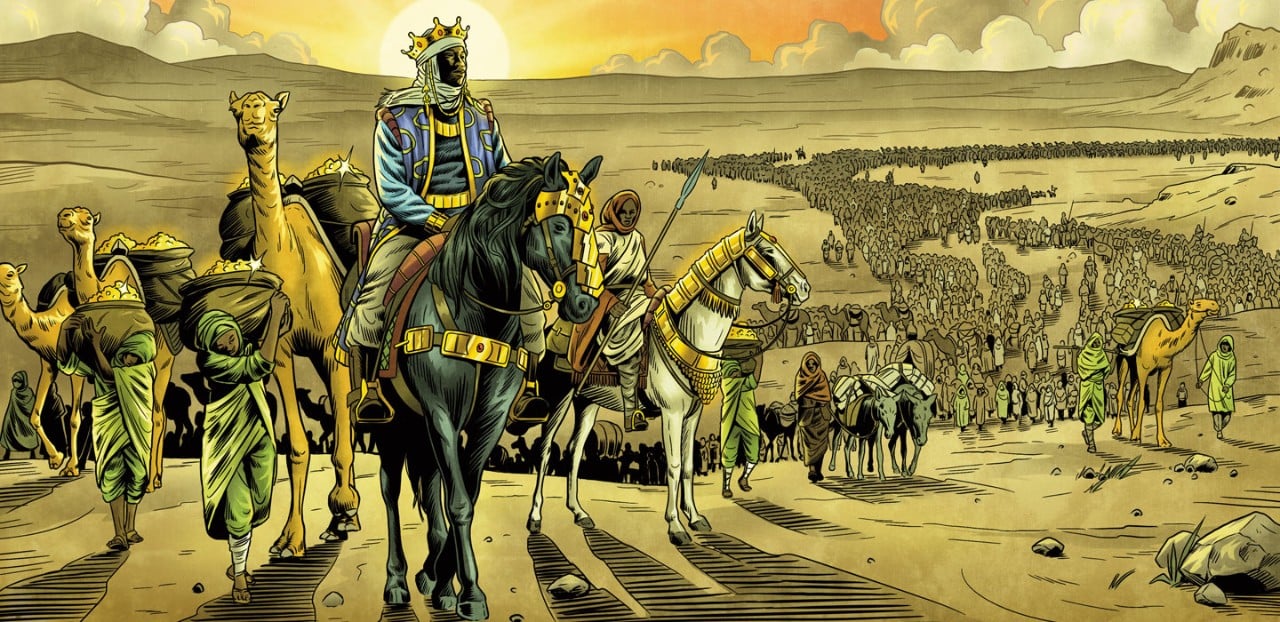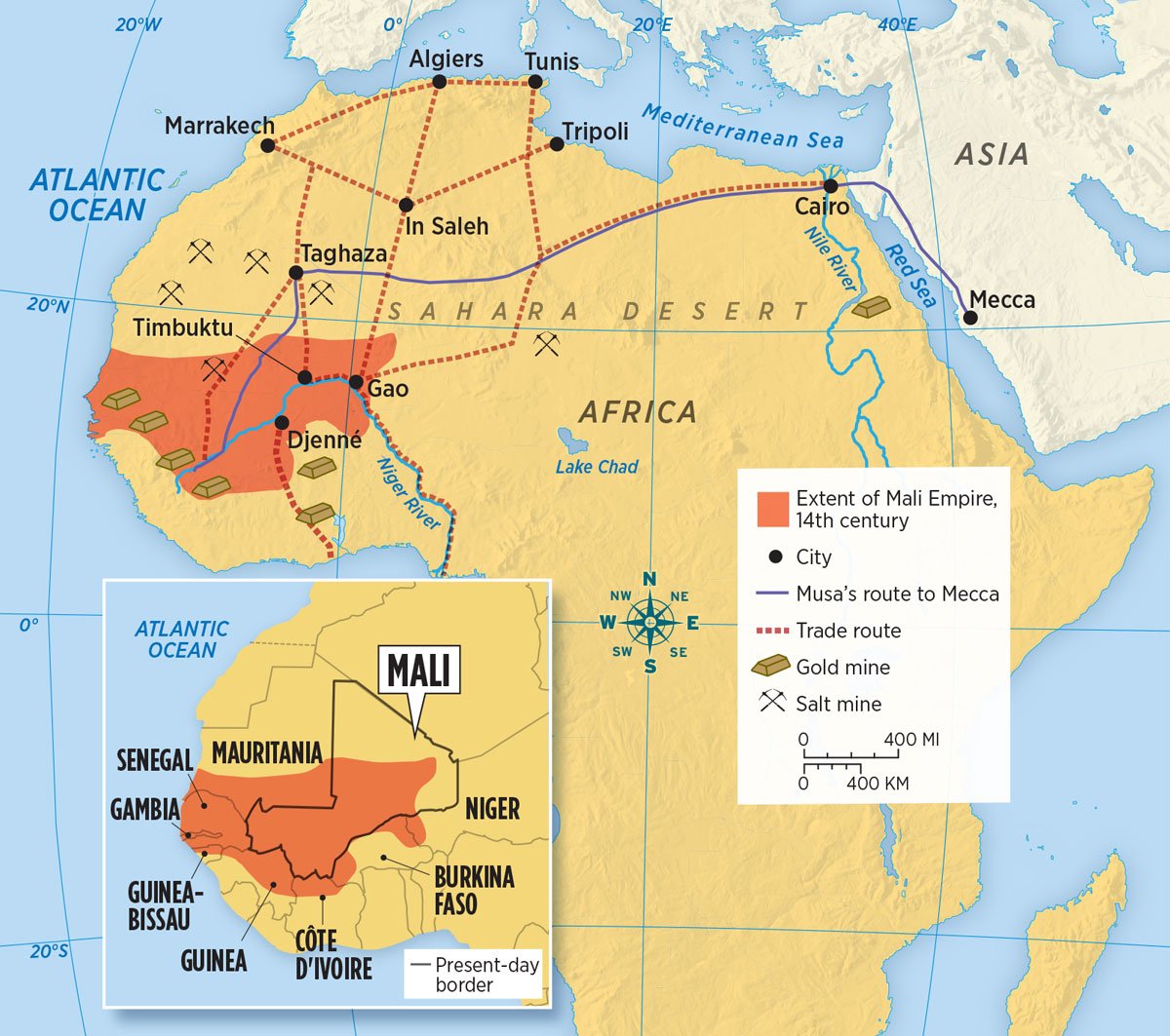Rihanna reportedly spends $1 million a year on her hair. Boxer Floyd Mayweather recently dropped $18 million on a diamond-encrusted watch. And Amazon founder Jeff Bezos shelled out $65 million for a private jet. But those celebs’ spending habits—and their bank accounts—would have been chump change for African emperor Mansa Musa (MAHN-sah MOO-sah). The 14th-century ruler still tops the list as the richest person of all time.
Musa ruled as mansa, or king, of the West African empire of Mali from 1312 to 1337, controlling about 80 percent of the world’s gold. His
Musa’s claim to fame extended far beyond money, however. The emperor was a skilled leader who transformed Mali into one of the largest empires in African history.
Original accounts about Musa and his reign still exist. So why haven’t more people heard of Musa, nicknamed the “Lion of Mali”? Mainly because he lived hundreds of years ago. Many world history classes don’t even discuss events that happened before 1450—especially those in Africa.
Here’s everything you need to know about the mighty emperor and the secrets of his success.
Q: How did Musa get so rich?
A: He was in the right place at the right time, for starters. Mali had an ideal location on the upper Niger River in West Africa. The fertile soil produced abundant crops and the area teemed with natural resources, including salt and gold.
Salt was a hot commodity in the ancient world. It could be used to preserve meat and other foods. That was especially important, since refrigerators weren’t invented for another 500-plus years. Mali had easy access to the Sahara Desert’s huge salt deposits.
As for gold, “the upper reaches of the Niger River produced more gold in the 14th century than anywhere else,” says Richard Smith, an expert on ancient Mali at Ferrum College in Virginia. (Gold was still relatively rare back then, which made the metal even more valuable.)
Musa built on that wealth by conquering Timbuktu and other major cities along trade routes in the Sahara. The conquests were doubly beneficial to Musa: Merchants paid him taxes, and conquered kings gave him gifts of gold and other valuables.









